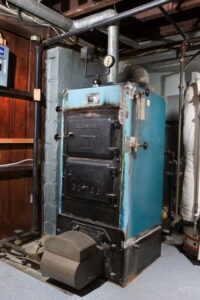
October is a month to start considering your heating needs for the approaching winter. The true cold weather is still some distance off, but the mild weather of this time of fall is ideal for having heating maintenance and other important jobs taken care of. One service you might need this fall is getting a new heating system.
You might already have suspicions that your current heater is no longer up to the challenge of winter and it’s best to retire it. This is a big decision, and you don’t want to make it hastily. We can help! In fact, you will need professionals to take care of any heating installation in Little Rock, AR, so consult our technicians early if you’re unsure about the condition of your current heater.
Below we’ll examine some of the tell-tale signs of a heating system ready for replacement.
The age of the heater
The average service life of a heating system depends on its type and how well it’s been maintained. If you’ve kept up with regular annual maintenance, here’s the lifespan you can expect:
- Gas furnace: 12–15 years
- Electric furnace 15–20 years
- Heat pump: 10–15 years
A system that’s over its expected lifetime is a candidate for replacement, especially if it’s displaying other warning signs. You can anticipate the heater starting to decline at this point, even with maintenance. And if your heater hasn’t been maintained, cut the life expectancy above in half.
Rising operating costs
A heating system (with maintenance) will retain 95% of its original energy efficiency throughout most of its life. In the last one or two years of its lifespan, however, it will wear down to the point where it will lose more efficiency and therefore cost more to run. When you see your heating costs rising in the winter without a discernible reason, the fault may be an aging heater ready to be replaced.
Loss of heating capacity
A heater in its final stages will start to lose its heating capacity and struggle to provide the house with its normal standard of comfort. If you have to keep raising the thermostat to get the heat your family wants, or you’re noticing cold spots around the house that weren’t there before, you may have a dying heater.
Excessive and expensive repairs
Continually repairing your heater year after year is a sign the system is too expensive to keep. You shouldn’t spend more on any single repair than half the cost of getting a new heater, and cumulative repairs that are more than $500 a year are also too steep.
The heater has recently had a hazardous malfunction
If you use a gas heater, which is the most common type in the area, you should have it replaced if it experienced a malfunction that allowed toxic gases into the house and tripped off the CO detectors. This kind of problem will most likely occur if the heater is too old, so it’s safest to have it replaced rather than try to have it patched up.
Dewees HVAC proudly serves the Conway area. Call us if you want a new heating system installed before winter.
